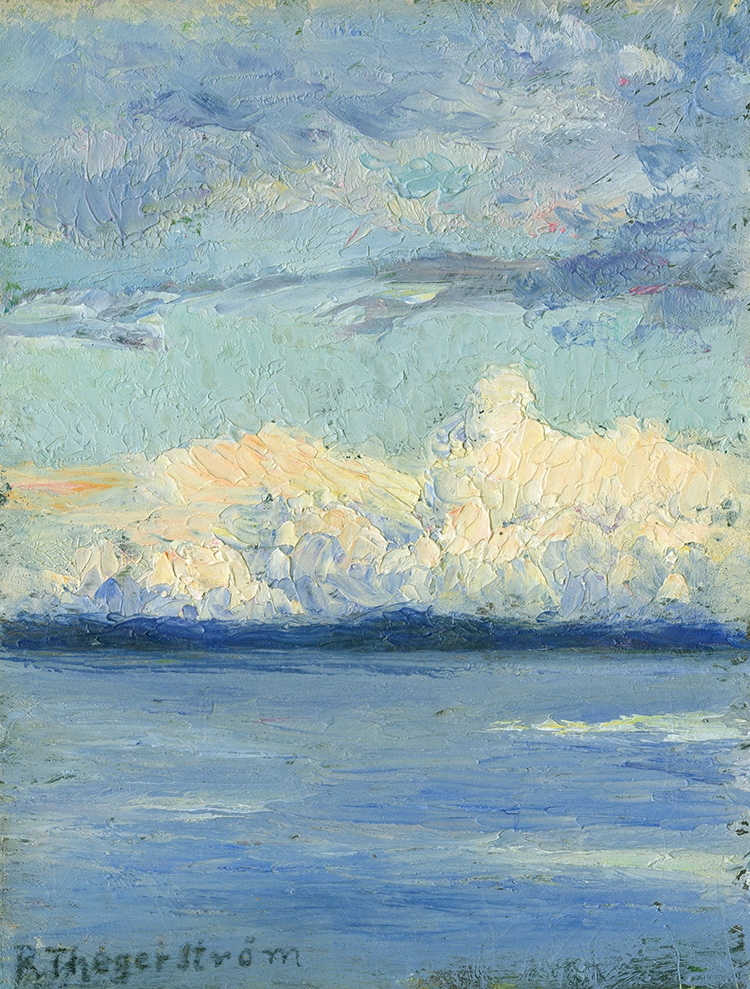Molnstudie
Cloud study
Oil on cardboard, ca. 1892
Signed R. Thegerström with black paint, bottom left; handwriting in the back 177 Cloud study painted by R. Thegerström, certified by Elin Thegerström
Size
17.5 x 14 cm
Provenance
Artist studio, thence by heirs; given by the Thegerström’s grandson to a Private collection, Sweden
Exhibition
Robert Thegerstöm belongs to a generation of Swedish artists who had extensive experience of living and painting abroad. Born in London, he was trained at the Royal Academy in Stockholm before joining the French capital where he entered the Académie Julian. He spent some time among the Scandinavian colony in the picturesque village of Grez-sur-Loing closed to the forest of Fontainebleau. The forerunners where the Norwegian painters Christian Skredsvig and Christian Krohg soon to be followed by the Swedish Karl Nordström and his compatriot Carl Larsson. This group was walking into the steps of Jean-Baptiste Corot and still used primarily tonal paint as they explored the serene banks of the river.
The present work is in a way one of the very rare works and a first-hand account of what happened during the summer 1892 in the Dalarö peninsula between the artist and his close friend poet and painter August Strindberg. At that time, Strindberg had not painted anymore since 1873, and suddenly in 1892 he once again painted a series of fantastic and great works. Many evidences let to think that he was convinced by Thegerstöm to do so, and it was certainly a moment of mutual influence and aesthetic views. There are a strong connection and similarities between the two oeuvres during these months. Also, both Strindberg and Thegerström were also using music as means of expression, reinforcing their mutual comprehension.
In this small study in which the sky occupies about two third of the surface, Thegerstöm intended to capture the bright luminosity of a summer day. The atmospheric aspect of this coastal landscape and characteristic blue colour – also seen in the few Strindberg works – is reminiscent of some studies by the precursors of impressionism, Eugene Boudin and Barthold Jongkind, but the technique alludes to a later period. Thegerström has applied the paint in several layers before flattening and ploughing it with the palette knife. He chose to mix the adjacent patches of pure colour directly on the painting surface rather than on the palette. He has employed a variety of whites and blues probably lead white, zinc white, cobalt blue and Prussian blue as a base. Close to this, we could list among Strindberg’s works, Double Vision, Land Clearing, Ruskprick II, Flower at the beach, all of 1892. Thegerström and Strindberg were then going beyond the observation of nature and were embracing symbolism.






